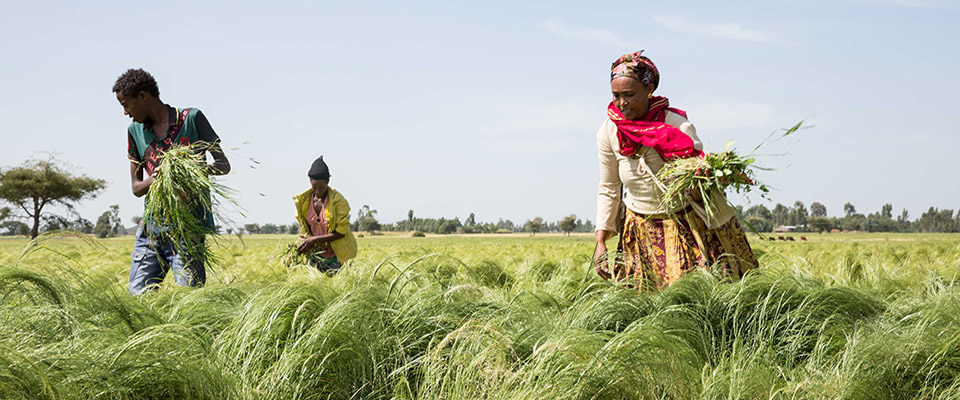- About
- Topics
- Picks
- Audio
- Story
- In-Depth
- Opinion
- News
- Donate
- Signup for our newsletterOur Editors' Best Picks.Send
Read, Debate: Engage.
| June 14, 2017 | |
|---|---|
| topic: | Economic Fairness |
| tags: | #Afar, #Danakil depression, #Eritrea, #Ethiopia, #salt mines, #white gold |
| located: | Ethiopia, Eritrea |
| by: | Bob Koigi |
The Danakil depression, the source of virtually all salt sold in Ethiopia, is a cocktail of salt flats, volcanoes, sulfur fields and red rocks. It is synonymous with sweltering heat, where temperatures average 34 degrees Celsius and at times climb to 50 degrees.
The salt mines located in Lake Afar, which forms part of the depression, stretch some 60,000 square kilometers and go up to 300 feet below sea level. It is in this sun-baked crust that the salt trade has thrived, passed over from generation to generation for centuries. At one time salt was a form of currency.
The salt trade has weathered the harsh conditions to blossom in a coordinated process that includes 750 officially registered miners, who, on average, extract 1.3 million tonnes of salt each year. The extraction is laborious, and involves breaking the plates of salt from the earth’s crust and then chopping them into large slabs using axes. The big slabs are then cut into tiles of smaller sizes. A four kilo tile for example is named ganfur. Once stacked, they are now ready for transport - predominantly by donkeys due to the unforgiving terrain of the basin. Approximately 1,000 donkeys and 2000 dromedaries line up each day at the depression ready to transport the salt to a commercial town Berahile located about 50 miles away, a journey that takes three days. At the salt mines, merchants also have to pay salt- collection tax before they are allowed to leave.
The trade attracts merchants from across Ethiopia, keen on selling the salt to households and farmers where the salt provides vital minerals to their livestock, in a country that has the largest population of livestock in Africa.
For the salt miners it is a tough call which sees them waking up at the crack of dawn and traveling up to two hours to be at the mines early enough and extract as much as they can before the sun becomes unbearable, a common phenomenon. But for all their efforts they earn on average 1 birr, the equivalent of five US Cents, for each salt tile they cut. On average a miner can cut up to 200 tiles a day. There have also been reports of heat killing workers; and National Geographic cited an incident in 2005 when an earthquake split the grounds and swallowed camels and goats, in an area that can experience up to 100 quakes a month.
But for the Afar people the ‘white gold’ trade is one they jealously defend and have always opposed any companies trying to set up shop in the area. When Berhane and Zewdu PLC tried to set up base in the area in 2011, the Afar elders vehemently opposed the initiative forcing the company to fold up and leave. The fear is that outsiders might introduce sophisticated technologies that would extract the salt easily therefore rendering the Afar out of business.
But modernisation is slowly penetrating the mines, with trucks now being allowed to ferry the salt as demand soars. It is an uncomfortable compromise the locals have been forced to embrace, at least to increase the volumes sold ultimately improving the lives of the miners and their families.
It is a phenomenon aptly captured by celebrated travel photographer Joel Santos when he visited the area to capture the ambitions, aspirations and toils of the salt miners. 'I felt the urge to tell the story of the salt miners. They work on the hottest place on earth and earn not much more than 100 to 200 Euros per month. The locals live a harsh life, probably one of the toughest there is in the world,” he said in his website.
By copying the embed code below, you agree to adhere to our republishing guidelines.

